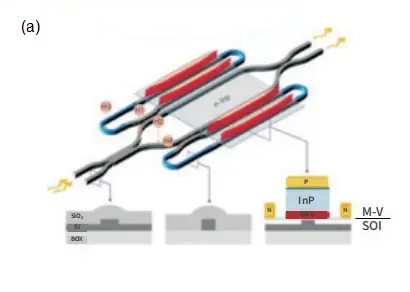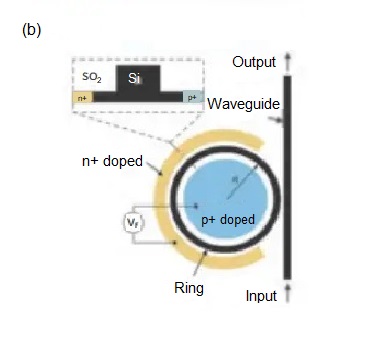Core Device of Silicon Photonic Chip - Silicon Photomodulator
2024-04-09
With the further improvement of communication rate, the single-channel modulation rate of 50 Gb/s has become the bottleneck of direct modulation technology. Therefore, the demand for EML is increasing, and external modulators have become one of the focuses of research and development.
In terms of data center demand for optical network connections of 400 Gb/s and above, silicon optical modules have more advantages than traditional optical modules. Modulators integrated on silicon optical chips - silicon optical modulators are divided into electro-optical modulators and thermo-optical modulators according to the modulation mechanism. Electro-optical modulators with larger modulation rates are generally used in communication optical chips.
According to the modulation principle, silicon optical modulators are divided into electrical refractive index modulation based on the plasma dispersion effect and electrical absorption modulation based on the Franz-Kerdysh effect or the quantum confinement Stark effect. Current is injected through electrical structures such as transverse or vertical PN junctions, zigzag, and interlocking structures. There are two types of optical structures commonly used: microring resonant cavity and Mach-Zehnder Modulator (MZM), as shown in the figure below.


The working principle of silicon light modulation based on the microring resonant cavity structure is: the current input changes the refractive index of the waveguide, causing the resonant wavelength of the microring resonant cavity to change, thereby achieving intensity modulation of the specified wavelength.
For silicon light modulators based on the MZM optical structure, after the electrically induced waveguide refractive index changes, the different waveguide refractive index causes a phase difference in the beams in the two arms of the MZM structure, and the two beams with different phases interfere after being combined. Achieve light intensity modulation.
Silicon optical modulators have high integration, high extinction ratio, low loss, small driving voltage, but poor linearity. Therefore, hybrid integrated modulators are currently used to modulate mature lithium niobate through heterogeneous bonding, epitaxy and other technologies. Integrating modulators, InP modulators, and organic modulators onto a silicon base can achieve micron-scale sizes, and the modulation efficiency can reach more than 5 times that of all-silicon modulators.







